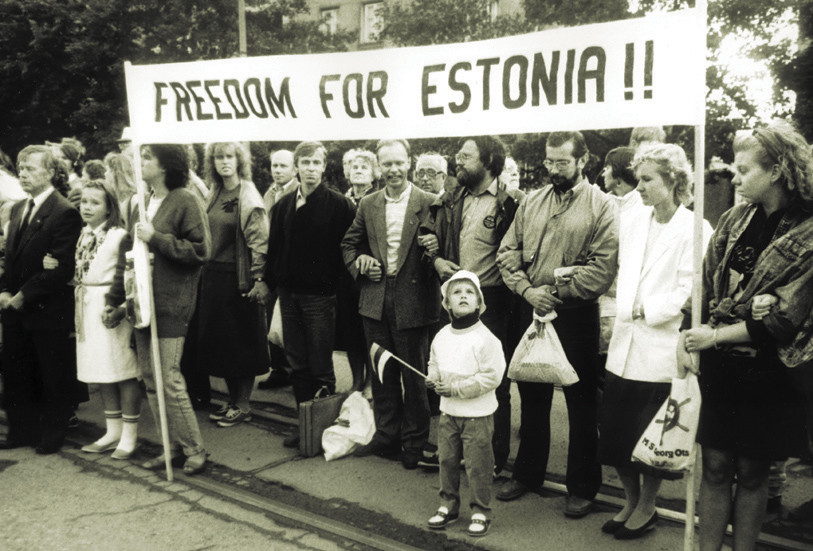A new exhibit at Stanford Libraries, called “The Baltic Way”, aims to tell the complicated history of Estonia, Latvia and Lithuania in the 20th century and considers the countries’ prospects and challenges in the 21st.
The exhibit, presented in partnership with the Hoover Institution Library & Archives and Stanford Libraries, will open on 10 May and run through 18 August 2018 in the Cecil H. Green Library, Bing Wing, on the Stanford University campus in California.
The exhibition is presented in two parts. A chronological narrative, presented in Green Library’s Peterson Gallery, begins with the run-up to the First World War and concludes with the three countries’ liberation from the Soviet Union in 1991. Aspects of Baltic culture and heritage, such as the region’s rich song traditions, reverence for nature, and penchant for innovation, are featured in the nearby Munger Rotunda.
The exhibit’s title, “The Baltic Way”, commemorates the 1989 Baltic Way protest, in which people in all three countries linked hands to demand independence from the USSR. The protest took place on the 50th anniversary of the signing of the Molotov-Ribbentrop Pact, the agreement between Nazi Germany and the Soviet Union that paved way for the Soviet occupation of the Baltic states. “The Baltic Way” also celebrates the three countries’ cultural heritage.
Tumultuous history
The exhibition takes visitors through the Baltic countries’ tumultuous history of autonomy, recurrent occupations, resistance, liberation and concern for the future.
“This exhibition is a powerful reminder of the threats to the Baltic region that unfortunately continue to confront Estonia, Latvia, Lithuania and even Finland,” Michael Keller, the Ida M. Green University Librarian at Stanford, said in a statement.
“However, the exhibit is testimony to the extraordinary transformation the Baltic states have undergone after regaining independence in 1991. Freedom and democracy in those nations have permitted and encouraged artistic, economic, technological, agricultural, social, educational and cultural advances of extraordinary magnitude.”
The Baltic Way was co-curated by Liisi Esse, the associate curator for Estonian and Baltic studies, Stanford Libraries, and David Jacobs, the Hoover Institution Library & Archives project archivist, and produced by Special Collections exhibits designer Becky Fischbach.
In conjunction with the exhibition, Stanford Libraries will host an international Baltic studies conference celebrating the 100th anniversary of independence for the Baltic republics from 1-3 June.
I
Cover: People standing in the Baltic Way in 1989.



